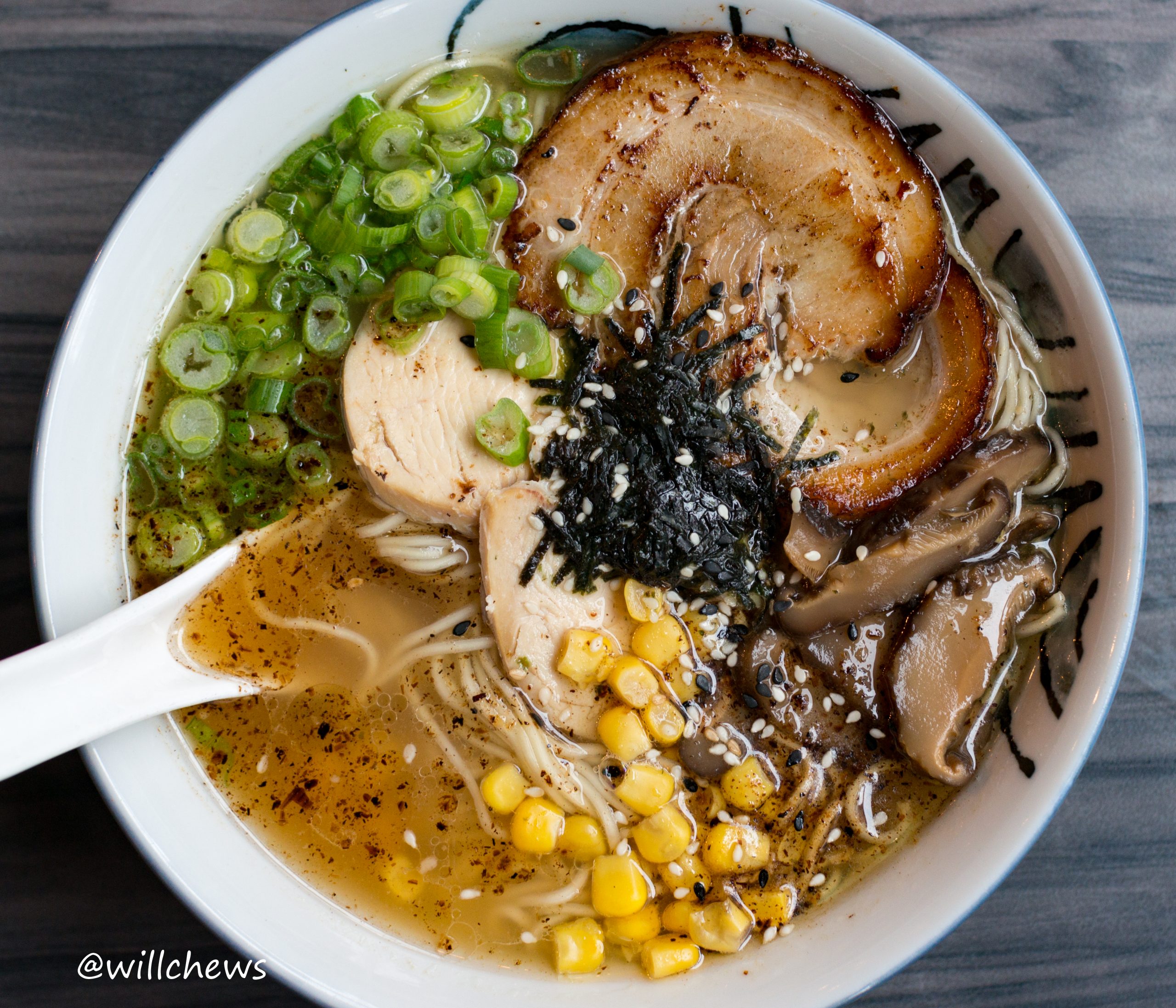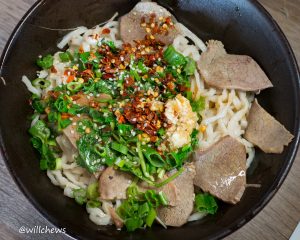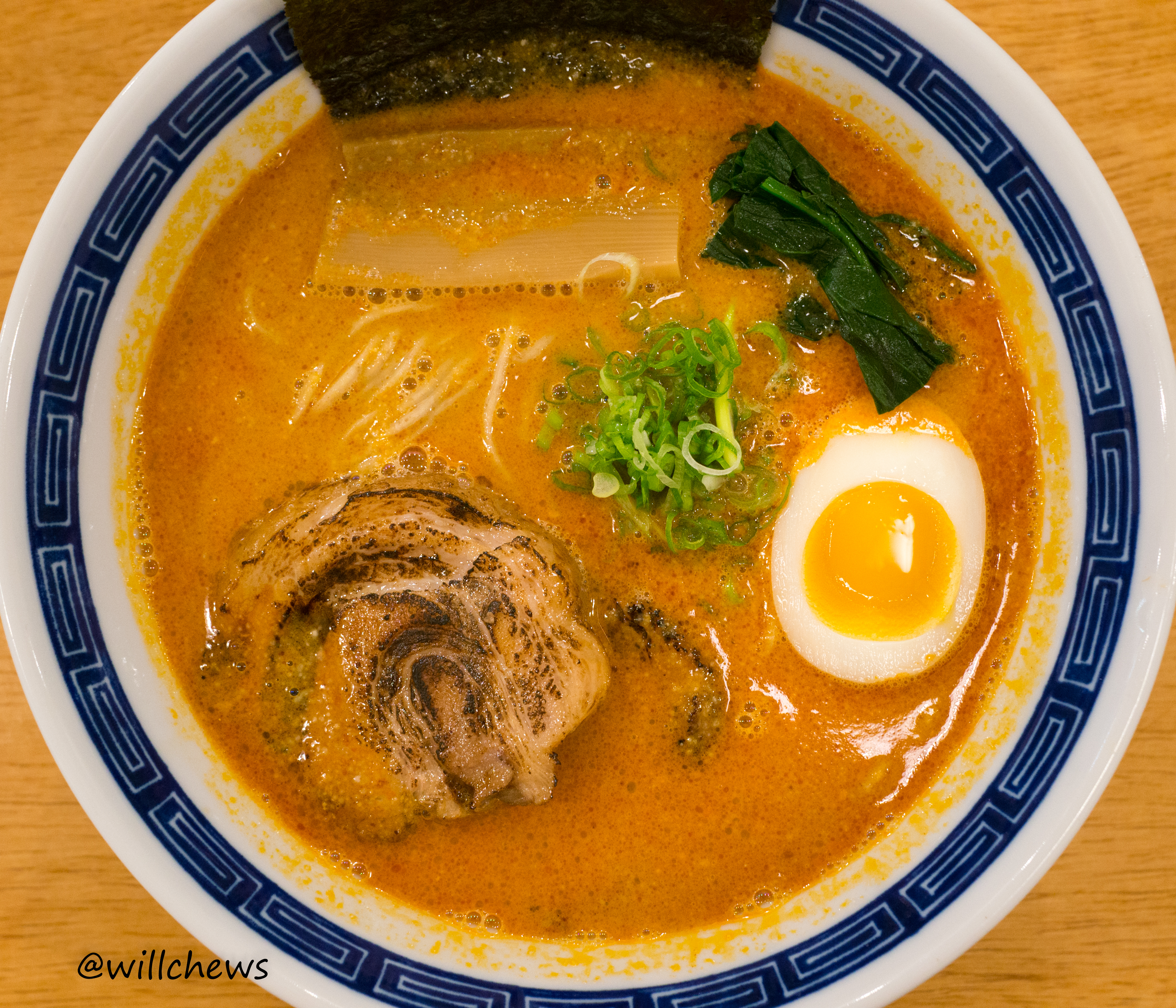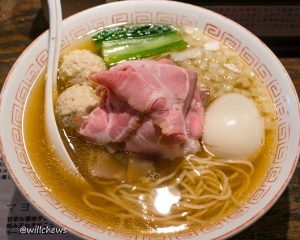The detailed tags and categories that accompany the bowls in these reviews and entries on the
Ramen Reviews Table may give the impression that ramen is a rigidly-defined dish that must fall into particular stylistic paradigms. Nothing further can be from the truth. As
Ivan Orkin, the chef celebrated as the first foreigner to successfully open a ramen shop in Japan, has claimed, of the major Japanese cuisines, “ramen is the most open, the most receptive to change and experimentation,” and the only one in which he could’ve succeeded as an outsider. It’s this heterodoxy that makes ramen culture so vibrant in Japan, where chefs are always experimenting to bring new flavors and modes of preparation to diners in a competitive environment. It’s why I can have two radically different-tasting tonkotsu-gyokai bowls from
Honda and Kokaibo (No. 90) and love them both. Yet while chefs are permitted to expand and pursue their ramen visions, they are still bound by the laws of culinary science and the need for execution: flavor combinations can vary, but they must
make sense and taste good, even as they function within a marketplace of hungry, caviling diners who may not share this vision.
These were the two themes in my mind after my visit to Tiger + Lily, located in Columbus’s Arena District adjacent to downtown. The restaurant, run by a husband-wife team of Thomas and Kirsten Chang, proclaims to use “a very personal interpretation of Asian inspired flavors with a modern twist.” As Thomas told me in our conversation, the couple sought to create ramen and other food that were healthy and tasted differently from the other options on the market. That meant making their own chicken broth (and not using a kit broth as I suspect some of their competitors might), forgoing pork (both broth and chashu) in favor of minced turkey, and using fresh fruit in their bubble tea. Upon hearing my experience of eating through Japan for three years, the aim Thomas said, was not to recreate the “authentic” ramen of Japan nor to serve heavily-Americanized Chinese food.
I understand the sentiment, but at least for their Tiger Tail Ramen, their execution was not there. This is most notable with the chicken broth, which is advertised as a bone broth–a
toripaitan–made by boiling whole chickens for 12 hours. But as evident from the picture, the broth was nearly translucent rather than creamy opaque as paitan should be by definition. This distinction appeared to surprise Thomas, and I responded by pulling out the image for
Ushio, which admittedly is on the radical end of the toripaitan creaminess spectrum. He did claim that the Tiger Tail Ramen was their most subtle ramen, but as the chicken bone broth is the base for many of their soup ramen, I don’t think that explains it, even if each bowl uses different tare. As for the flavor of the broth, it wasn’t unpleasant, but it tasted like a subtle chicken soup rather than a chicken-shio ramen broth, its closest analogue. Indeed, Thomas said that sometimes he instructs his servers to describe the ramen as a “chicken noodle soup” to customers. That said, the front-end punch I was expecting from a ramen broth was missing, though I liked the use of nori strips and chopped green onions, which gave needed depth to the broth.
The rest of the bowl was a mixed bag. Tiger + Lily sources three different noodles from Sun Noodles, and the thin, straight noodles in my bowl were cooked properly and tasted fine. The chashu were much more problematic, as both the chicken breast chashu and the thinly-sliced, grilled coil of pork belly were both dry. The ajitama was missing from my bowl and tasted fine after I asked the server to fetch it for me. In keeping with the mantra of not hewing to established paradigm, there was no menma but there was corn and shiitake mushrooms which are uncommon in bowls of this style. The corn itself was harmless but added nothing to the bowl. The shiitake mushrooms–which were very unusual–were actively harmful to the bowl. They’d been soaked in apple cider vinegar beforehand and brought sharp, sour flavors that was too overbearing for such a light-bodied bowl. They were the perfect illustration of my earlier point how ramen may contain “novel” ingredients and flavors, but they must make gustatory sense and taste good. This was a perfect example.
During our conversation, Thomas pointed out a number of instances where the restaurant’s culinary vision had to accommodate the tastes of diners. For instance, an earlier attempt to make a ramen that used both chicken and clam broth was scrapped because sufficient diners cited allergies or dislike of the flavor. Moreover, Tiger + Lily’s downtown location and its success–the Best new Restaurant in 2017–may not give it the clientele or incentive to be more experimental.
These are credible arguments. But I want to push back against the idea of business constraints with an argument for the powerful impact of quality, which I argue can be a compulsive force for diners to expand their palates. While undoubtedly there will always be a subset of diners who will remain wedded to the creamy tonkotsu/spicy miso ramen paradigm, I have anecdotal evidence from other ramen shops to suggest that diners are willing to accept new dishes if their baseline quality is high enough. Well-executed ramen does not threaten Thomas and Kirsten’s desire to promote healthy, heterodox ramen, but rather advances it while also incentivizing diners to develop their tastebuds.
Q Factor: None (1615 on a Weekend)
Sense: Watching K-Dramas and Big-12 NCAA basketball in a ramen shop is a first
Price: Tiger Tail Ramen ($11.95) + Pork Belly Chashu ($3) + Tax/Tip
Tiger + Lily
19 E Gay St.
Columbus, OH 43215



